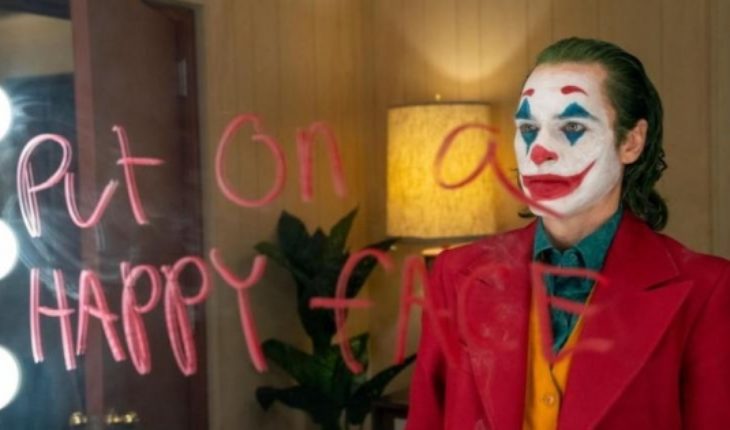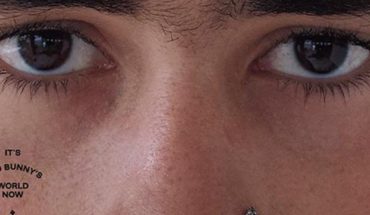“If “Joker” – properly translated as “Joker”, as we know the character in Latin America – had focused on the transformation of a beleaguered, confused and humiliated human being into a volatile, unpredictable and aimless killer that would be a phenomenon. That alone would be enough to make it a milestone. You don’t have to go far. Except for Lars von Trier’s “The House Jack Built” (with a Matt Dillon returning in glory and majesty) such characters are in stark retreat. Not so in series, where they abound and in superlative quality.
Todd Phillips’ “Joker” is a great movie. It manages to impact and move, something not so simple on days when a universal avalanche of information has to attack our capacity for surprise. Both the agony of the main character, and the setting presented to us by a decadent and sombre city are perfectly accomplished.
Perhaps certain specific aspects may turn out to be a bit “unique,” but that the whole works, it does.
For example, the timeless music is appreciated, although bringing up “That’s life” in Sinatra version is perhaps somewhat obvious to allude to a character with extreme mood swings (“Some people enjoy/Stomping on a dream/ But I don’t leave/ I don’t leave it that discourages me/ Because this great old world/ It keeps going around”).
Another very particular gem: the clown’s manuscripts and jokes appear in Spanish – will such a resource be used in each language to which the production was translated?-. Suddenly, however, a kiosk is shown offering newspapers with large headlines in English; a few seconds later, the camera focuses on them… and they’re in our language. Very strange that these kinds of mistakes are even in mega-productions with such cultural penetration.
If the film had been called, for example, “Arthur Fleck: The Dark Origins of a Killer” it would have been more in style to reality. Perhaps, even if he had never achieved the planetary success he has. A more commercial exit was chosen (there is nothing wrong with it either), which already refers to an archetype of evil: the “Guasón”.
Where is Batman’s archenemy? Could a (failed) Stand-up comedian project, no matter how angry he has, against society and the Wayne family, confront the “bat man” and put him in check? Common sense says no.
Dondé, then, is the “classic” Joker? And Gotham?
Lost antihero
We need to remember who we’re talking about.
He is one of the villains of the universe of the most iconic superheroes of all time. His main goal in life is to attack and drive Batman, whom he has been accompanying since the first issue of the comic (1940).
The clash of personalities is visible. The dark knight is serious and circumspect, little or nothing given to jokes and always eager to fight evil and make justice prevail; his antagonist wears bizarre garments (who would think of wearing a long purple jacket?), has a white face, an enervant smile and green hair, as well as living in pursuit of crime, terror, destruction and chaos.
While in certain periods linked to censorship in the United States his character has been “softened”, for most of his criminal record he has proudly shown himself to be a homicidal, sadistic psychotic and enjoying inhumane and incomprehensible actions. It was not, he has spent good stays in the asylum “Arkham”, but he is recognized with a superior intellect, the one that comes to be characterized as “genius” of evil, endowed with a twisted and sinister sense of humor that respects no one, starting, of course , by Batman. This creates an extreme enmity.
Phillips’ bet is courageous, for it threatens all our conceptions about this cursed being, but also with an enviable host of followers. In his favor, he plays that DC Comics never established official data on the character’s emergence and evolution.
It is played by portraying the origins of a demented who becomes a criminal, even though in the same comics he insists that he does not know them himself: one of his tricks is, rightly, to distort them, modify them according to his mood or, simply , for joking. The comic “The Killing Joke” is considered as the birth of the current “Joker”, because it portrays him not only physically, but establishes the characteristics with which we know it from the ’80s onwards, including his desire to… be a comedian. This gives rise to the filmmaker to present his thesis.
Philips makes its interpretation of the “Joker” and is valid. Not for nothing has the film that everyone comments. The Internet is vertigo-invaded by the phenomenon. It is also accompanied by good luck: these days, there is no blockbuster that can shade you. Sometimes the superhero offering is gigantic and I drink it all; to the present, it is an antihero who enjoys all the attention of the world. A very unusual phenomenon. Michael Moore recently alluded to Donald Trump in a column in which he enthusiastically praised the film, drawing attention that the current White House tenant remains in power and exercises it arbitrarily and unresponsive for his actions. Both are unprecedented events. Do they indicate a certain moment in history or are they merely “chances”?
The power of the Phoenix
Let’s be clear: what these lines try to do is to reflect that “Joker” strays too far from an iconic character of mass culture, to the point of making it almost unrecognizable, not to distort the film. As a point of comparison, you can’t imagine Hannibal Lecter crying because no one “understands” or gives him love. Both in the films and in the series starring a Mads Mikkelsen capable of making us forget even Anthony Hopkins thanks to his elegance, cold blood and intellectual will, the result is always identical: a profile reliable to his origin, the novels of Tomas Harris.
“Guasón” is a powerful film that will be left hanging around in the minds of audiences. By the way, it can become a classic, first and foremost because of its critical view of existence, its denunciation of the lack of empathy for the underprivileged (call ye poor, strange or mentally ill: the list is much more extensive) and its description of a society where violence is hidden as a virus, but it can erupt at the slightest stimulus. The years will say, but this is not a “forgettable” production.
That Joaquin Phoenix’s performance is anthology seems undoubted. Not only do his bitter laughter of manic depressive swarm, but also multiple details, some as elemental as his decaying form of smoking letting the cigarette advance on his already unpresentable fingers of so much nicotine and toxic. Arthur Fleck desperately and harrowly yearns for success, but intimately knows that he lacks every condition to do so. THE actor portrays such a conflict through the extremely slow and stony modifications of his face. There are no outbursts of fury: his disappointment seems so profound that it is useless to express it.
He has been described as “over-acted,” something that is perhaps a valid critique, as well as arguing that it is a somewhat monochromatic interpretation. But we must also not forget that it is a cinema intended for large audiences. It’s not a justification, but it’s a context data. Some show must have had this movie. Already the only fact that a character with such a level of existential displeasure is world success is a difficult thing to conceive.
Absolute triumph at the leading level.
Broken mirror
The “Joker” is an ultra-violent psychopath with a humor worthy of a rotten heart. It has been several generations that have been fed that myth. They assume that, beyond their intrinsic twisting, he looks like someone who has a good time being tied up with burning sticks in Hell. Following the logical thread, you already know what is coming: you will enjoy doing Evil. That will be his destiny.
It is very lawful to think of a character’s reinterpretation, even if it departs from the canons typical of the comics world. However, there are certain ideas that cannot be modified overnight. Something – intimate, almost visceral – resists such a change. That’s what happens with the current Joker. That’s what sets off the alarms in this case.
It is impossible to imagine a Hitler, Stalin or even a Pinochet (the one who, as it is known, not only led a horrific dictatorship, but exercised a methodical system to enrich himself illicitly with state money, which, plain and simple, is nothing more than being a vulgar doubtful, irresolute or off-center robbery. They always had enough reserves of hatred of humanity to be genocidal.
Such a spirit is the one that should take precedence in any version of the “Joker”. Unless, of course, the director would like to introduce us to “another” Joker. Now, the result is more like a chapter of “Mindhunter” than the origins of a being that has long abandoned all goodness in the heart. Even the “Charles Manson” on the show is scarier. And that didn’t kill anyone, leaving such a role in their “girls.”
It must be acknowledged that this “Joker” is not lacking acolytes, as we see in the final minutes, but it is much more likely that to torture Batman decides to take the same reins.
There’s a curious detail going around. Upon the death of Bruce Wayne’s parents, we have just been born in his capacity as the superhero archenemy. Therefore, he will be perhaps about 50 years old when he must deal with a Batman twentysomething, in the fullness of his forces. How will he do it? On the go, it wouldn’t be wrong to switch drugs, opting for ones that not only control their sick laughter, but activate their neurons to the fullest and give it a mireal power.
Whether it was all watching a psychopathic or horror movie, they abound on Netflix or the Internet. What is confusing is that the old charactersthe character’s elevations were easily querribles, even sympathetic in his entrenched evil. It’s not the same with this Joker. Except for certain very pointed scenes, it gives infinite sadness throughout the exhibition.
Predecessors
This “Joker” has the ballast to carry performances that dug deep into the collective unconscious and were real monsters in the box office of their days.
We set off for the series “Gotham”, which was able to stage a “Mad City” (its subtitle) for 5 seasons and 100 episodes, ending this year. While he continues Bruce Wayne’s growth, it’s not until the last chapters where he is introduced as Batman. In the meantime, an endless gallery of criminals, genetic experiments and classic beings of this universe make theirs right and wrong, always trying to sow the idea that the world is nothing more than a limbo in which all the unpunished and miserable they have no choice but to try to impose their rules.
It is in this amalgam of crazed spawns that an “alter ego” of the “Joker” appears in an unforeseen way: it seems that DC Comics did not allow the series to use that name. But their physiognomy and attitude leave no room for doubt. These are two brothers who, curiously, will overlap in the roles: Jerome Valeska and later Jeremiah Valeska.
Let’s go on the side. The former is exultant for exercising his empire, including in the Arkham asylum, from where he begets his plans in the future. Obviously, given his superior intellect, he exercises clear leadership among his companions in Hell. He knows what wood it’s made of and he has no doubts. When he returns to the streets he does not hesitate in his purposes, those that could be reduced to: identify potential victims and establish attack strategies, try to check the established order (essentially, he is a terrorist, in the most classic sense of the term) and, finally, cause the maximum destruction, suffering and death possible. A psychopath made and right. When he dies, almost by osmosis his brother replaces him.
We had Heath Ledger before. For many the best “Joker” of all time. The truth is that its characterization remains indefileable in the retina. It was his last role in life. Not only does that immortalize him, but he gives rise to thinking he was in his full faculties, when he died so young: he was under 30 years old. It impresses a performance of such quality.
How can we not empathize with this being unscathed, distrustful and always with impulses to do harm? The bomb scene at the hospital is key. It doesn’t take any more to move on to the history of cinema. You can see an echo here to “Caught Without Exit”, but the freedom of this “Joker” will be different. He goes out into the world to get a rematch. Every step of his smells like revenge. He is accompanied by few things, unless for those pitiful clothes, a face that is impossible to get with a million hangovers and his obsession.
Another leap in time. Let’s go to 1989. Tim Burton’s “Batman,” where the winged character is Michael Keaton, though jack Nicholson and Kim Bassinger. It was a tremendous success, among other reasons to revitalize the superhero genre, plummeting around the time. (Who could, then, assume the avalanche of films of the genre that would come over the years?). He brought back a cinema fighting between Good and Evil, at a time when all that seemed forgotten.
At that time, comedies, or existential dramas, as well as successful attempts at Science Fiction. But what Burton generated was a storm. It was a unique year that brought us the “Disintegration” of The Cure, a bucket of cold water by the end of the decade. And also the fall of the Berlin Wall. It was then that Nicholson made his “Joker”, as a goldbrous of the ’80s, a period that various analysts have defined as unrepeatable years, by the number of technological, creative and massive phenomena that took place. Nicholson, an absolute star, let out the evil Jack who was already coming from “The Shining.”
Prince also had a lot to do with the impact of this fight between Batman and the Joker. His soundtrack was an unheard of, bringing him the greatest success of his career. Then came the decline, until he was killed by fentanyle at 57. He left us “Partyman” and other notable songs.
Although it may seem a little outdated today, this film is a classic of those years. It has all the characteristics of a production with ambition and focus, something to be thankful for. And who’s our Joker? We already said it: old Jack. It’s certainly not the performance that will define his time in the world, but it’s hard not to associate him with this role, always laughing and joking. He was a playful “Joker” and playboy, a specimen worthy of his time, where optimism seemed to be everywhere. I never gave up his smile. He likes to annoy Batman, but he stands on his own. You don’t need anyone to justify your presence. It’s Jack Nicholson. There aren’t two in this world. And he was one of the Jokers who gave glory to his myth.
The final laugh
Remarks have been the remarks that “Joker” takes out various “Taxi Driver” loans. Yes, the atmosphere of decline is very similar. The same depression abounds everywhere. That pathetic humidity of a city falling apart. But are we in Gotham? Apparently, no. It’s more like the New York of those years where the sad clown roams. Both the characters of Robert de Niro and Joaquín Phoenix live in a city they detest and want to see demolished to end all that “garbage.” That’s what they agree on. They’re both fed up with their lives and what’s around them.
But this “Joker” isn’t Travis Bickle.
A disenchanted taxi driver, Bickle seeks some redemption in defending a teenage prostitute (Jodie Foster, in her first role). Fleck aspires to something more ambitious: to show society how wrong he is to leave out sensitive beings whose sole purpose is to give “happiness” to people. That’s his crusade.
That’s why he accepts an invitation to participate in a successful program hosted by, paradoxically, a Niro show that embodies everything America’s night talks have been doing for decades: ruthless satire. Shortly before realizing his attendance, he mocks this graceless “Joker” without mercy and publicly humiliates him, much to the joy of the people in the studio and the millions who follow him on TV. He treats him almost like an in front of the whole country. That’s where the rage begins.
Now, herein lies one of the main differences with Scorsese’s film. Travis never wanted to be integrated into the world, because he always was, but he’s disgusting. He’s a wary man and always vigilant. A guy who was able to cut his hair to the Mohican in 1976 (that is, even before the outbreak of punk) and who does not hesitate to train his psychopathic abilities in front of a mirror, walk with a gun through the streets and kill a pimp willingly , and then be shot as medals. The 2019 “Joker” commits murder, but in his first act he feels fear, shame and dread. And run to hide.
Much has been said about the “violence” of this film and that the United States authorities would take preventive measures in the face of possible attacks by people disguised as the “Joker”. So far that hasn’t happened and hopefully it stays that way. In any case, blood runs little in production. Even in a black series of detectives made in Norway or Sweden there are more deaths and corpses. Except for the massive rebellion of the final minutes, there’s not much else. It is true, not all violence is physical: the constant derision, derision and contempt of Fleck are always present. But something has to be recognized: as a publicity hook, that violence thing is great.
“Time passes and we get old,” Mercedes Soza sang. Therefore, it is good to know oneself and, in this case, to know whether or not one can face the “bat man”, who, while he has no superpowers, has a good technological battery and will to be a fearsome enemy. Clearly, Todd Phillips’ “Joker” is in no condition. If the director were to address an essential change in the character in an eventual second part the story would be another.
There is a very unique poem that perhaps more than anyone knows. It’s called “Reir Crying,” from Mexican Juan de Dios Peza. He focuses on David Garrick, a British actor and playwright of the 18th century, whom he represents as a clown capable of making everyone who sees his performances laugh. One day, a very disappointed and sad man arrives before a well-known doctor. “Nothing makes me charming or attractive/ I don’t care about my name or my luck,” he says. After prescribing various options to improve your mood, he recommends seeing the famous clown. “And will it make me laugh? -Ah! yes, I swear to you;/ He does; nothing else he; more… what does it bother you?/ -So the sick man said, “I do not heal:/ I am Garrick!… Change the recipe.”
That’s exactly Arthur Fleck’s problem. As a depressed clown it works well; not, as Batman’s potential enemy.
Francisco Ramirez, Journalist and writer. He has worked in national media and also in the TV network “RT in Spanish”. “Book Fund 2018” Award in the Creation/Tale area, is a frequent contributor to literary sites on the Internet. Facebook: “An Odyssey in Russia”
The content poured into this opinion column is the sole responsibility of its author, and does not necessarily reflect the editorial line or position of El Mostrador.





